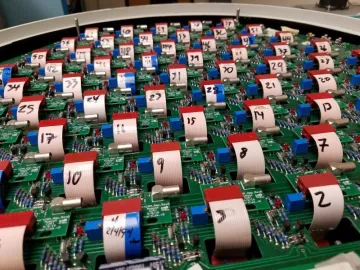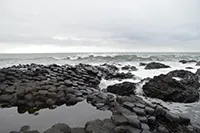Another Wavelength: Neil Momsen

This month in Another Wavelength, we chat with 5th year Ph.D. Student Neil Momsen currently mentored by Lars Furenlid.
Where are you from? I’m from White Bear Lake, MN. The high school team’s mascot is a white bear. I have no comment on the city’s creativity. At least there's a story behind it.
What brought you to study optics? I worked at 3M in St. Paul, MN as a summer intern while I was getting my bachelor’s degree. My job was in the Oral Care Solutions Division, where they produce a system that takes “digital impressions” of the patient’s mouth, rather than using the tray of impression material (“goop”). After this, the dentist can use the digital model to design better crowns and bridges and then use a CNC mill to make them. I had the opportunity to work on some of the optics involved, and I was, as they say, “hooked”.
Who is your hero in science? Nikola Tesla. He claimed he could basically do CAD and mechanical simulations in his head, and he paved the way for wireless communication. Plus all that stuff about A/C current. Smart guy.
Describe your research in 20 words or fewer. I’m working on a preclinical SPECT system with optimized data acquisition and adaptive imaging configurations.

Readout circuitry for my SPECT system with my contribution (the little green circuits with the silver connectors)
Describe your research in 200 words or fewer. SPECT (Single Photon Emission Computed Tomography) is a medical imaging technique that uses a radioactive isotope attached to a targeting molecule to diagnose and study diseases and conditions. When the isotope decays, it emits a gamma ray (higher energy photon than visible photons and x-ray photons), which we collect. However, we can’t use any “direct” detectors (think: your camera sensors) because of the high energy, so we use indirect detection via a scintillation crystal and photomultiplier tubes (PMTs).
I’m retrofitting a 30-year-old system with modern electronics which allow us to collect more data than usual from the PMTs, improving image quality. As part of this, I had to design, solder, and test around 60 circuit amplifiers to our PMTs (see picture). We’re also using adaptive imaging to control the sensitivity and resolution of our system in real-time. Because of the nature of gamma rays and their interactions with materials, they don’t refract or diffract much. So rather than using lenses or mirrors, we use pinholes to form our images. This creates an inherent tradeoff between sensitivity and resolution. By changing these parameters throughout an acquisition, we hope to reduce the effect of this tradeoff.

Name three neat facts about you.
- I’ve read all 7 Harry Potter books in 2 different languages (English and French). It was worth it to learn that they translate “magic wand” as “magic baguette”.
- I thoroughly enjoy the self-torturous activity of running, and the large amounts of food you can shamelessly eat afterward.
- I’ve done a fair bit of photography. Some of my favorite scenes to photograph have been the Giant's Causeway in Northern Ireland, the Eiffel Tower at night, and Mount Lemmon at sunrise (as viewed from the top of Pusch Ridge).
